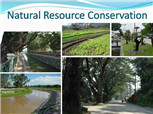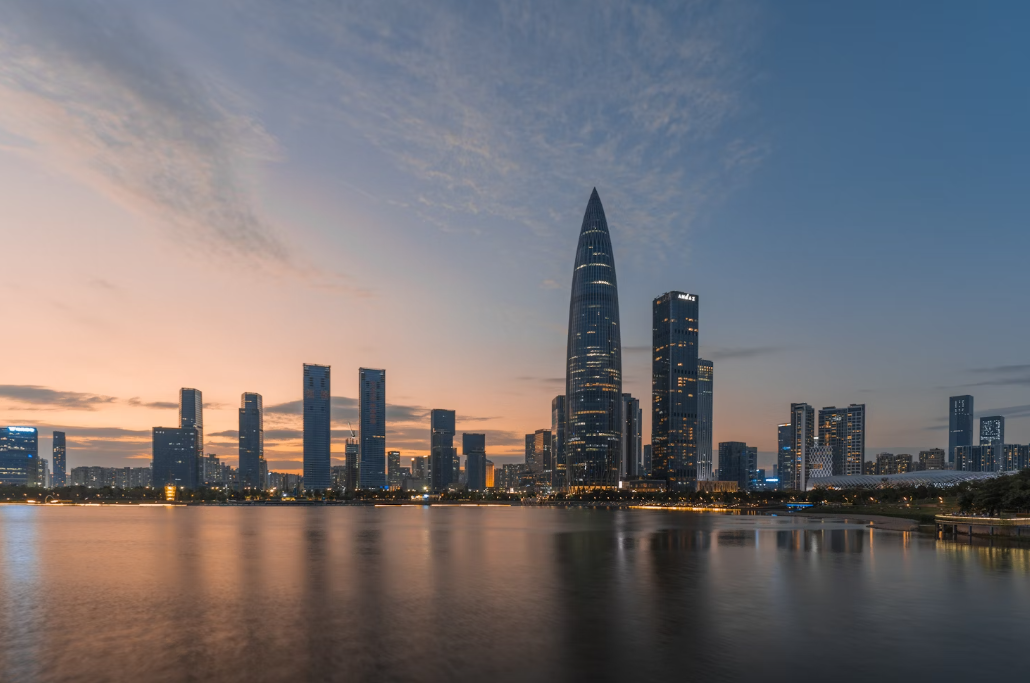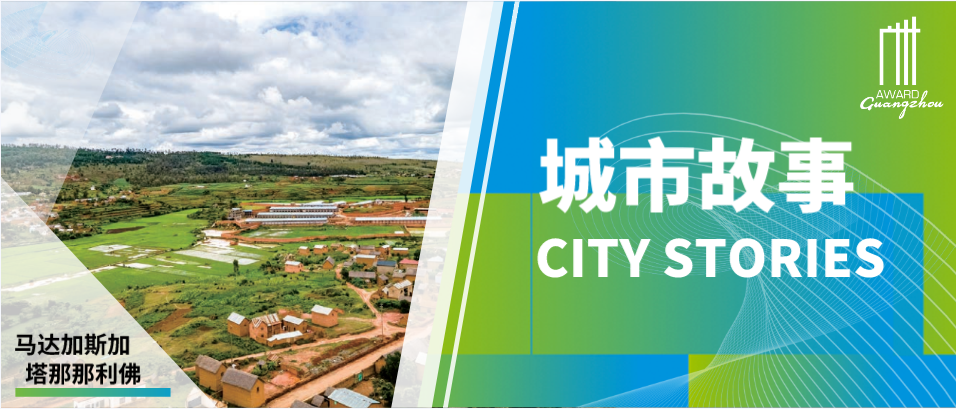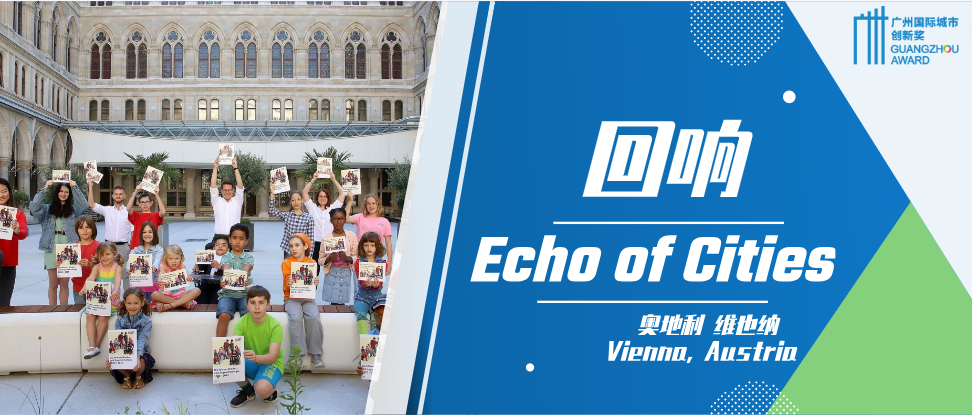Chiang Rai, Thailand
Urban Ecosystem and Biodiversity Conservation towards Sustainable City and Climate Change Resilience

Background Information
According to a national guideline to develop trade and commercial channels, including tourism with neighboring countries, north Thailand is designated as an economic center linking the Greater Mekong Subregion (GMS) and South Asia.
Chiang Rai is one of the eight northern provinces in Thailand that has been positively affected by the economic and commerce growth. The boom has brought about changes to the social and physical environment in Chiang Rai province. The province has seen an increase in the number of people migrating there to invest and establish businesses.
Chiang Rai Municipality has to support and serve both its citizens and visitors. The changes in land usage have been vast, as agricultural land has been rapidly urbanized. As a result, natural resources including forest, water, natural habitats and animals are deteriorating continuously.
The administrators of Chiang Rai Municipality were aware of the threat of urbanization, so they initiated the project “Enhancing Urban Ecosystem and Biodiversity in Chiang Rai City” in 2008, a project that continues today. In order to bring a positive impact to all sectors of the city, government agencies, academic institutions and more than 10 organizations teamed up with the business sector to take part in the project.
So far, over 60,000 people to have had green space opened up to them for leisure activities. It offers students, collegians and youth a better source of learning than ever before.
Goals of the Initiative
The project is aimed at restoring and conserving the diverse ecosystems that co-exist in the city area in order to maintain a natural balance of urban and economic development, society and the environment. The summary of changes is as follows:
Change in policy: In the past, Chiang Rai Municipality aimed to develop the city as a gateway to the Mekong Region without clear environmental obligations. But after the project was successful, the present administrator and Mayor of Chiang Rai Municipality, Mr. Wanchai Chongsuttanamanee, set the vision for development to be “Livable city focusing on good environment, along with Buddhist way, and the well-being of the people, and to be ready for ASEAN Economic Community (AEC) in 2015 ”.
Change in strategy: The aforementioned vision comprises of seven development strategies, one of which is to become a low-carbon city, focusing on mitigation of carbon dioxide, together with the adaptation to deal with the climate change by conserving the ecosystems and biodiversity in the city and also having preparedness and contingency plan for natural disasters.
Change in view and process of urban development of the administrator: After this project took off, the municipality became only a facilitator because it was aware of the better value of “the sense of ownership” and “sustainability”.
Change in budget allocation: After the results were observed, the municipality integrated this project into its three-year local development plan, and allocated the budget for implementation continuously.
Change in community strength: After some time, the change that could be clearly observed was the increase of people’s participation in several activities with the educational institutions and agencies. As a result, not only natural resource and biodiversity have been conserved but the participation of people as well as civil society was also established in Chiang Rai.
Parties and Partners to the Initiative and Resources Used for Implementation
Strategic partners that involved in development and implementation of this project by sector as follow:
Public sector plays a key role in supporting academic resources such as knowledge and material, including being a lecturer in training, joining in exhibition, supporting knowledge media and joining the working group to perform a biodiversity field survey. Financial support is excluded. Agencies involved are as following:
•Office of Natural Resource and Environment (ONEP)
•Department of Environment Quality Promotion (DEQP)
•Royal Forest Department (RFD)
•Department of National Park, Wildlife and Plant Conservation (DNP)
Local educational institutions also play a key role in the survey, and research on the biodiversity in each particular area and act as a consultant to the working group to identify species of specimen collected. Those include:
•The Center of Natural Resources and Environmental management (NREM Center) of Mae Fah Luang University
•Biodiversity Center of Chiang Rai Rajabhat University
•Faculty of Science of Mahidol University
•Teachers and students in schools associated with Chiang Rai Municipality
Non-Governmental Organization and Civil Society Organization play a key role in the development of project proposal, coordination with funding sources and other agencies at both national and local level, and coordinating with the municipality to drive the activities of the project. They are:
•Thailand Environment Institute Foundation
•The National Municipal League of Thailand (NMT)
•Chiang Saen Bird Club
•Network of 62 communities in Chiang Rai Municipality
•Doi Saken Temple and Doi Prabhat Temple
Private sector plays a key role in financial and academic and technical support to the implementation. Those are:
•Keidanren Nature conservation Fund, Japan
•Rocky Feller Foundation
•Thailand Business Council for Sustainable Development (TBSCD)
The resources used for implementing the initiative include:
Human Resource: In terms of working groups for biodiversity survey, whose members came from various sectors. These persons were the project advisory committee and working group at local level.
Technical Resource: In term of experts and expertise from government agencies, educational institutions and civil societies. They provided techniques to do the survey on plants, animals, insects, lichens and aquatic animals.
Media Resource: United the media together with the municipality to disseminate knowledge of biodiversity conservation and promoted this project to the people in Chiang Rai through various types of media in order to raise awareness and enhance people’s participation in the city.
Innovation for the Initiative
This project has revolutionized the process of urban and environmental development. In the past, the municipality has to plan and implement by itself which sometimes did not meet the needs of the people and lacked sense of ownership because there was no real participation. This project focused on the participation process and enhanced the involvement since the very start, such as at the establishment of the working group to include different parties as defined previously. Capacity of the working group was built up. The participants learnt how to plan and follow up the progress on a regular basis, how to apply appropriate techniques to do the survey, to collect sample and to identify plant and animal specimens collected, and the most important change was how they applied the data collected (Baseline Data) for localized conservation and development planning for short-term, medium-term and long-term, considering the protection and the wise use of the existing resource and its biodiversity, as a learning site and a living museum. The municipality hosts the main resource for such support. However, currently there are only few local governments in Thailand which run such biodiversity conservation program in the city.
Chiang Rai Municipality was the first to conserve biodiversity seriously at Doi Saken forest which is a mixed deciduous forest ecosystem. This area is about 24 acres and located right in the center of Chiang Rai city. The initiative extended to Doi Prabhat reforestation area which covered about 20 acres, and further expanded to Nong Pueng lake and Mae Kok Noi river which was a wetland, in which plants and animals have been surveyed. At present, it expands to cover ecosystems in urban environment in order for studying such as the study of lichens found around residential area and public park in the city in order to find a way to use them as air quality indicator. Another program is to emphasize the significance of large trees by a competition called “The City’s Precious Tree” for the urban residents to love and cherish precious trees present in the city area, and appreciation in plant biodiversity.
The project agrees with the vision of the administrators, with its clear policies and strategies. As a result, the project is financially supported very well and continuously by the municipality. In addition, the municipality also has connections to academic parties, including government agencies and educational institutions as above mentioned to provide the technical knowledge for the survey team to identify the species. Annual meeting was set for the academic supporting team and working team to meet and discuss and the plan made together was then incorporated into the municipal development plan.
This project was inspired by the administrators of the municipality, who earlier had visited cities in foreign countries and admired the way they conserved the plants, trees and the biodiversity. They wished to do so but had no idea how to start. This resulted in implementing fragmented projects after projects. Later on, Thailand Environment Institute Foundation suggested that the idea should be implemented more systematically and seriously. The preliminary project was supported by KNCF in 2008 and Chiang Rai Municipality was selected to be the pilot city of this project. It was the start of the conservative effort taking place up to present.
There are several groups of beneficiary as follow:
The residents in Chiang Rai have more and larger green space with high biodiversity to use for recreation, relaxing, and learning source.
The students have open and natural classroom where they can learn about real plants and animals which cannot be found in the textbooks. There is a youth group to study birds, insects, plants, and lichens in various ecosystems in and around Chiang Rai city. The municipality supports the activities well with a learning center for collection and exhibition of the studies.
The entrepreneurial business benefited from the number of tourists and visitors of local government’s site visit programs to Chiang Rai city. This increases their revenue. They have established an association of small business entrepreneurs and participated in the management effort in the locality.
Chiang Rai Municipality benefited from having a strengthened network of communities so it reduced the civil gap and also reduced conflicts. There are natural sources to help to maintain the ecological balance of the city as well.
-
 Urban Innovation in China | Shenzhen: How to Maintain Momentum to Achieve Carbon Peak by 2030 While Leading Green and Low-Carbon Development?
Urban Innovation in China | Shenzhen: How to Maintain Momentum to Achieve Carbon Peak by 2030 While Leading Green and Low-Carbon Development? -
 City Stories | Antananarivo, Madagascar: Building Resilience in the City Food System
City Stories | Antananarivo, Madagascar: Building Resilience in the City Food System -
 In Focus | International Women’s Day: Building a Women-Friendly City
In Focus | International Women’s Day: Building a Women-Friendly City -
 Echo of Cities | Vienna, Austria: The Youth Melody of an Ancient City
Echo of Cities | Vienna, Austria: The Youth Melody of an Ancient City























 Tel: +86 20 3780 4434
Tel: +86 20 3780 4434 Email: info@guangzhouaward.org
Email: info@guangzhouaward.org Address: Rm 1609, FuLiXinTianDi, No.307 Guangzhou Dadao Zhong, Yuexiu District, Guangzhou, Guangdong, 501600, PRC
Address: Rm 1609, FuLiXinTianDi, No.307 Guangzhou Dadao Zhong, Yuexiu District, Guangzhou, Guangdong, 501600, PRC




